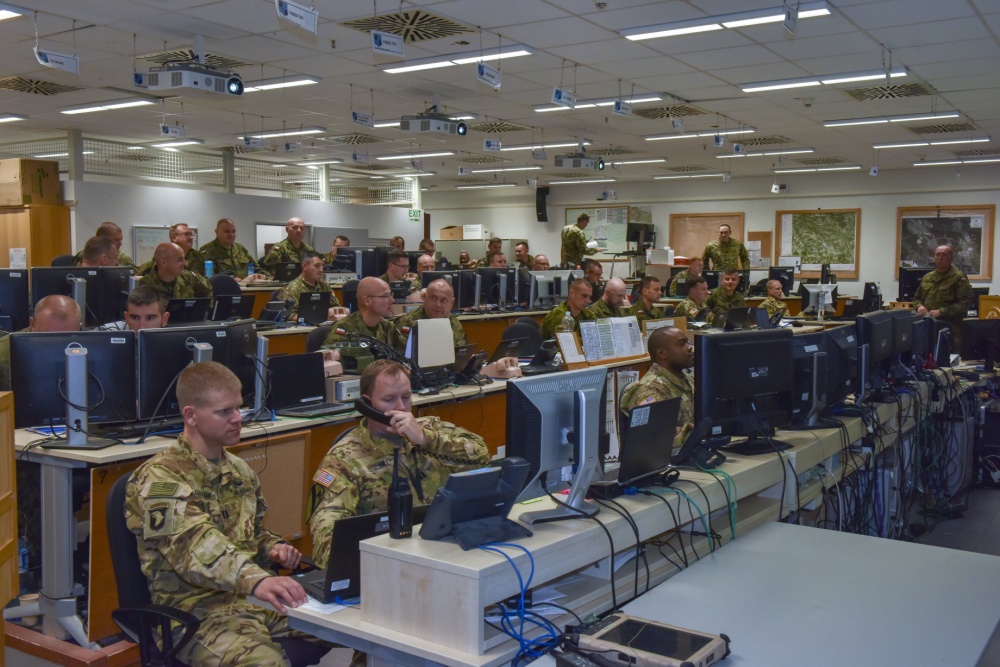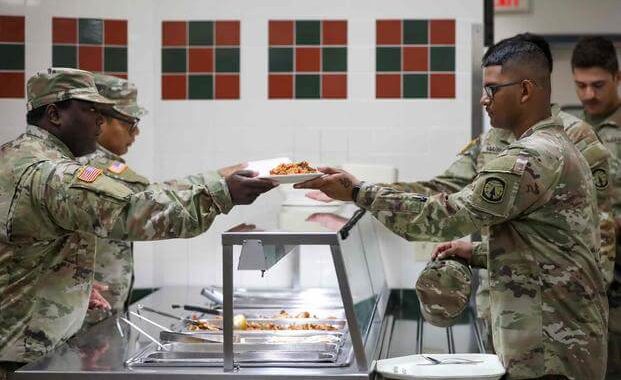High Command: The Team Behind Interoperability Training Event Combined Resolve XII
3 min read
HOHENFELS, BY, GERMANY
Spc. Ryan Barnes
7th Army Training Command
We constantly hear about Soldiers routinely training in the field during exercises to ensure they are ready and prepared for whatever mission comes their way but who are the service members and civilians behind some of these training events? High Command (HiCon) is a dedicated team of leaders, soldiers and civilians whose job is to plan, develop and provide oversight to soldiers training out in the field during exercises like Combined Resolve (CBR) at Grafenwoehr and Hohenfels training areas in Germany.
“Think of it as a referee or like a white cell,” said Lt. Col. Derek Campbell, the chief of exercises and mission command at Joint Mission Readiness Center (JMRC) at Hohenfels, Germany . “We make sure that everything stays on track and doesn’t detract from the brigades’ primary training objectives. We have exercise control that makes sure procedures that the division is executing doesn’t derail the scenario.”
The HiCon typically brings in divisions from around the world. For CBRXII, a training exercise which started July 27 and will end August 28, they brought in divisions from across Europe, including the Polish army’s 11th Armored Cavalry Division. Their division began with helping design the exercise for this rotation’s training.
Throughout the exercise, HiCon ensures the quality of the training and that the commander’s end-state is both realized and attained. Observer Controller Trainers (OC/T) Teams from the field report to Campbell about whether or not he needs to ramp up the training for HiCon or to back off because the soldiers are nearing their threshold for failure, which is one of the goals of a HiCon.
“We want to stress the brigade as much as we can but we don’t want to totally break them down. Then they don’t get any training out of it,” said Campbell.
“The biggest take away that I’ve taken from it so far is the ability to have shared understanding across the formation with our allied partners and what we do as U.S. forces,” said Command Sgt. Maj. Freddie Thompson, the senior enlisted advisor for exercise and mission command at JMRC. “To be able to see the translation of how we do things with systems; systems that they (the groups training in the box) don’t have or did not understand how to use and how we are able to educate them so that they can actually run the fight and be more advised.”
The HiCon provides the participating service members their boundaries while allowing them to train to the Army’s standards. OC/Ts watch the service members participating in CBRXII and don’t let them fail but also won’t fight the battles for them. Instead, they leave the decision making to the allied partners so the shared understanding can be observed.
To be an exercise director means I have to train my team and teach them that we learn from making mistakes during training, said Brigadier General Dariusz Parylak deputy commander of 11 Armored Cavalry Division of the Polish army and participant of Combined Resolve XII. I see the amount of questions decrease everyday proving that the service members are learning. With or without mistakes, it doesn’t matter. Mistakes is just a name for activity.
Soldiers who are fortunate enough to train in Europe at JMRC get to experience a very unique and career shaping opportunity. The effectiveness of the training those Soldiers receive can be directly attributed to the hard work and dedication of the leaders, soldiers, and civilians who are part of the exercises and mission command team.
“We try to make it a true multinational division flavor as if to replicate what a unit fighting in Europe would actually experience,” said Campbell. “But we try to mix it up a bit to try to get that interoperability, not just technical interoperability which is not always easy to get after but the human and procedural piece is a big part of what we do for interoperability.”





